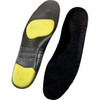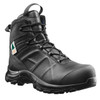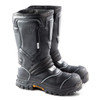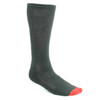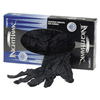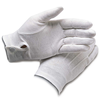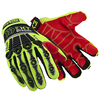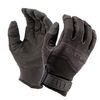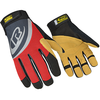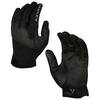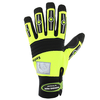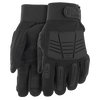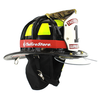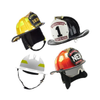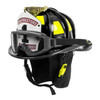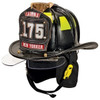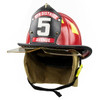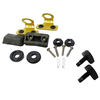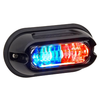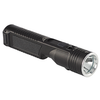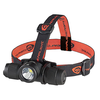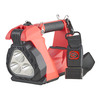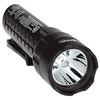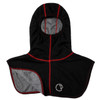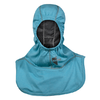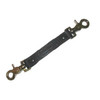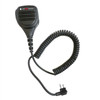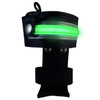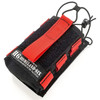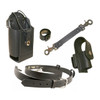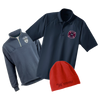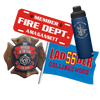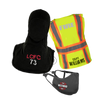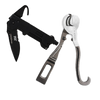GAIN AN EDGE WHEN SEARCHING FOR PEOPLE AND EVIDENCE
Posted by Warren Wilson on Apr 23rd 2024
Searching for an armed suspect with the naked eye is challenging and dangerous, complicated further by darkness, foliage or any of the other various visual obstructions presented by both urban and suburban areas. Having experienced a few “misses” myself – being close to a hiding suspect and failing to locate him or her – while on a technology-poor tactical team and in a decade of patrol work, I know thermal imaging would have made a significant difference. I can also think of more than a few occasions where this equipment would have been useful in finding missing children or discarded evidence, as well.
NIGHT VISION?
The devices we will talk about are not the typical night vision units (which gather light to create an image). FLIR makes microbolometers which detect infrared radiation to “see” heat sources emitted from things like the human body, vehicle engines and objects like discarded firearms. Any object which contrasts significantly from the heat signature of their background can be discerned with a microbolometer.
Why is the distinction between night vision and thermal imaging important? Light gathering devices are only helpful in low light situations. However, heat signatures are distinguishable even in the daylight. When using light-gathering devices in low light, a sudden exposure to bright light can give the user some problems. Light sources are completely irrelevant with heat signature devices
NOT YOUR FATHER’S FLIR
FLIR has been on the forefront of thermal imaging equipment since the1970s. When most cops think of FLIR, they think of “Forward Looking Infrared” cameras attached to police helicopters bringing an exciting aerial viewpoint to reality cop shows in the 1990s. They were incredibly expensive and departments without a budget line item for helicopter expenses couldn’t really afford it. However, FLIR technology offers us many more options today which are within the fiscal reach of most departments these days.
BREACH
For example, the Breach PTQ 136 is a 7.4-ounce, 5.5-inch microbolometer which can be handheld or attached to a helmet via rails for hands-free operation and can be quickly changed between the two. This is a great unit for tactical teams due to this feature. It has a refresh rate of 60 hertz which means it operates in real time and doesn’t lag as you move the monocular quickly from one area to another.
SCION OTM (OUTDOOR THERMAL MONOCULAR)
The Scion OTM has a more refined user interface and has options of 9 hertz or 60 hertz image refresh rates. It features geotagged recordings and still photos with an I67-rated housing which means it has been tested to function after being submerged in one meter of water for one hour. The Scion series has GPS as well as Bluetooth and WiFi for streaming or file transfers. The Scion series has the most onboard features including picture-in-picture capability and is FLIR’s most advanced monocular to date.
SCION PTM (PROFESSIONAL THERMAL MONOCULAR)
The Scion PTM has all of the features of the OTM but it intended for professional applications. The Scion uses FLIR’s powerful Boson core and is capable of taking geotagged (location) photos and video.
LSX
The LSX model is one of the earlier generations of thermal monoculars and is geared toward longer-range detection. It has a laser pointer to reference your views between the naked eye and the thermal image. The LSX has a longer focal length giving it a greater range. The LSX might be the unit for your agency if you often need to find objects at a distance such as a field search.
SCOUT II-320 AND SCOUT II-640
The Scout series are generally lower-cost options which can still detect human targets from 300 to 1200 yards, depending on the model. They can be purchased with 9 hertz or 60 hertz refresh rates and all have an I67 rating. Their detection distance and clarity are still excellent and will serve the needs of most departments who can’t swing the higher cost models very well.
SCOUT TK
The Scout TK only retails for 650 bucks and I’ve seen them even less expensive at online retailers. I bought one of these units recently and have been very impressed. I must confess that it wasn’t just a professional purchase. I use it when engaged in outdoor pursuits mostly. Have you ever been camping or hiking and wondered what was stirring in the bushes? With the Scout, you’ll know.
PALETTES
FLIR microbolometers offer different palettes or color schemes. The user chooses the palette depending on the environment, background and even personal preference. For example, the “White Hot” palette shows warmer objects in white and cooler objects in black. “Sephia” displays warmer temperatures in yellow and cooler temperatures in black. It minimizes eye strain for longer missions such as surveillance. For detecting humans and animals, I’ve found “Black Hot” to be my personal favorite.
HAVE A SAY IN THE MATTER
Firefighters have been using thermal cameras to locate victims in smoke-filled structures for decades. They’ve become commonplace in the fire department equipment arsenal. It’s about time law enforcement joined them.
Most career cops have experienced a miss (they didn’t find a suspect on the first pass) and understand the frustration that goes with it. We know that failure to locate a discarded firearm means it could end up in the hands of a curious child. Failure to locate a missing person could mean their safety. Failure to locate an armed felon allows him or her an uncomfortable amount of control over what happens next.
Thermal imaging technology from FLIR gives us more control over those situations.


